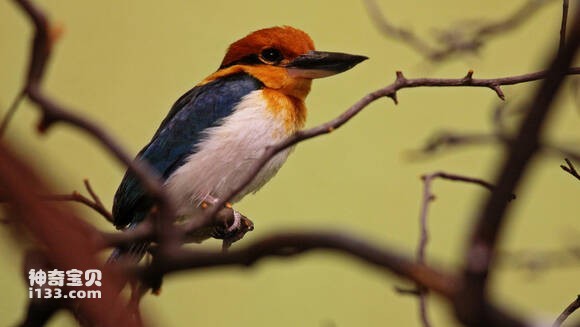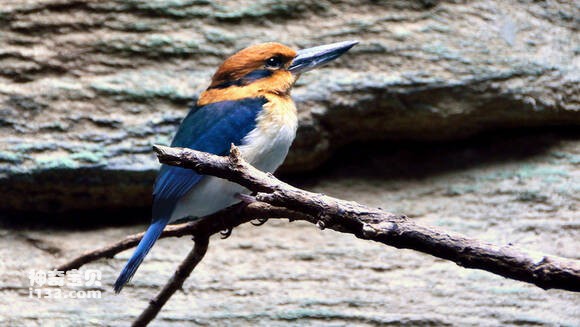Todirhamphus cinnamominus
IUCN
LCBasic Information
Scientific classification
- name:Todirhamphus cinnamominus
- Scientific Name:Todirhamphus cinnamominus,Guam kingfisher
- Outline:Climbing birds
- Family:
Vital signs
- length:No textual research information is available
- Weight:No textual research information is available
- lifetime:No textual research information is available
Feature
It's the only bird that can perch on utility poles at the edge of the forest
Distribution and Habitat
It is found in the Pacific islands of Guam, Micronesia and Palau.
Appearance
Wingspan 20cm, weight 60g the sex difference is clear. The adult male has a reddish-brown top cap, neck, all coat and underparts. There are very wide blue-black lines that run across the entire eye, including both ends of the ears and the back of the neck. The shoulder blades, back and wings are blue-green, and the primary wings and tail are blue. Brown legs, black mouth.
The female differs. The chin and throat are white ivory. Shin and wing feathers light cinnamon. Back and shoulders olive green. The chest and neck are decorated with black feathers.
The mouth is thick and long like a chisel, the base is wider, the mouth peak is straight, the peak ridge is round, there is no nasal groove on both sides; Wing circle, the first primary feather is equal or slightly shorter than the seventh primary feather, and the second, third, and fourth are nearly equal in length; Primary feather base with white spots; The tail is round.
Details
The scientific name Todirhamphus cinnamominus, Guam kingfisher, there are 3 subspecies.

The cinnamon emerald preys on lizards, reptiles, geckos, insects, small crustaceans, worms, newborn mice, locust larvae.

The age of sexual maturity is 2 years. The breeding season extends from November to August, and the awareness of couples to defend their territory during the breeding season is quite strong, and they can be heard very active. The nest is the cavity of a dead tree, more than six feet above the ground. The female lays three eggs at a time, white. They hatch twice a year. Incubation lasts 21 days. The baby bird cannot be seen after birth. Both parents feed together until 35 days, when they can fly independently.

Both subspecies of cinnamon emerald are under threat. The invasive brown tree snake on Guam was wiped out and is now listed as an endangered species by the United States. They are kept in colonies of less than 100 individuals. There are plans to reintroduce them to Guam's protected areas and forests. The Pohnpei subspecies declined by 63% between 1983 and 1994. The cause of Pohnpei's bird decline is unknown.
Listed in the International Union for Conservation of Nature (IUCN) ver 3.1:2008 Red List of Birds.
Protect wild animals and eliminate wild meat.
Maintaining ecological balance is everyone's responsibility!








